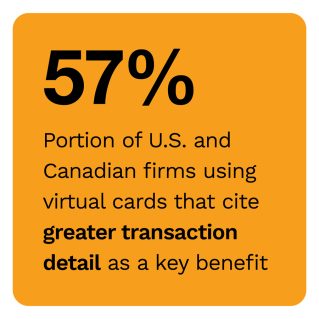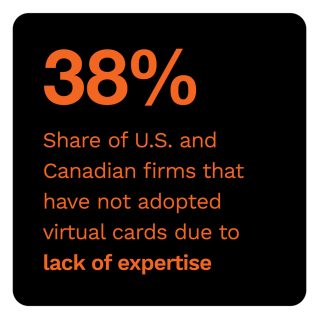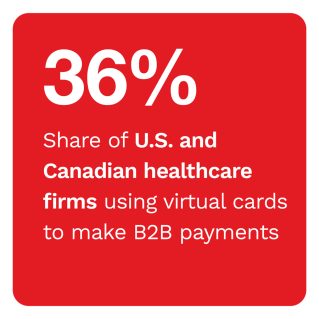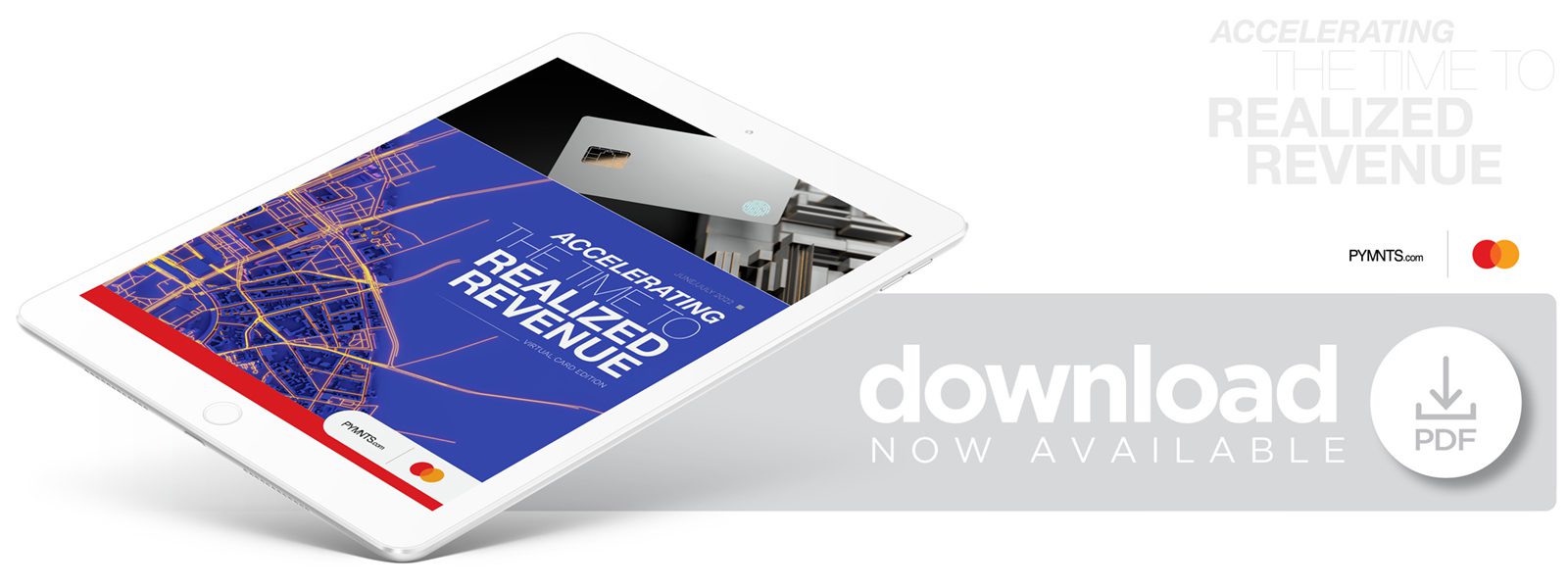Virtual Card Use Brings Cash Flow Boost to 4 in 10 Businesses

Thirty-eight percent of all United States and Canadian businesses use virtual cards to make or receive payments from their business partners. The firms that have adopted virtual card payments like these say that the technology has improved their broader payments operations in an average of 10 different ways, with payments speed, transparency and security being among the most important.  So what is preventing so many businesses from adopting their own virtual card solutions and reaping the benefits of doing so?
So what is preventing so many businesses from adopting their own virtual card solutions and reaping the benefits of doing so?
In “Accelerating The Time To Realized Revenue: Virtual Card Edition,” a collaboration with Mastercard, PYMNTS surveys 400 business leaders from across the U.S. and Canada about their interest in virtual cards and how the technology has helped businesses that have adopted it to optimize their business-to-business (B2B) operations and boost their bottom lines.
Key findings from our research include the following:
 • Virtual card payments are most used in the healthcare sector, with 36% of all U.S. and Canadian healthcare firms using them to make B2B payments and 40% using them to receive payments. Large-market firms in both healthcare and the transportation, logistics and shipping sector are far more likely than their smaller competitors to use virtual cards.
• Virtual card payments are most used in the healthcare sector, with 36% of all U.S. and Canadian healthcare firms using them to make B2B payments and 40% using them to receive payments. Large-market firms in both healthcare and the transportation, logistics and shipping sector are far more likely than their smaller competitors to use virtual cards.
• The firms that have adopted virtual cards to both make and receive payments cite enhanced speed, transparency and security as chief benefits. Canadian firms that use virtual cards cite more benefits from using them than their counterparts in the U.S. They are 137% likelier to say they have benefited from increased access to credit and 409% likelier to say they have benefited from added rebates, for example.
 • Businesses’ infrastructure and staffing limitations are the most common impediments to wider virtual card adoption. Forty-eight percent of U.S. and Canadian firms that do not use virtual cards say that their current systems cannot accommodate the technology, for example, and 36% say it is difficult to integrate virtual cards into their systems.
• Businesses’ infrastructure and staffing limitations are the most common impediments to wider virtual card adoption. Forty-eight percent of U.S. and Canadian firms that do not use virtual cards say that their current systems cannot accommodate the technology, for example, and 36% say it is difficult to integrate virtual cards into their systems.
These are only a few of the key findings that PYMNTS uncovered during our research into U.S. and Canadian firms’ virtual card B2B payments. “Accelerating The Time To Realized Revenue: Virtual Card Edition” details why so many of these businesses have adopted virtual cards and why it is time for their peers to follow their lead.
To learn more about how virtual cards are helping U.S. and Canadian businesses optimize their B2B operations, download the playbook.
For all PYMNTS B2B coverage, subscribe to the daily B2B Newsletter.
